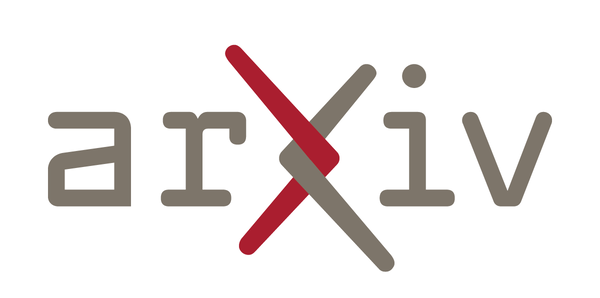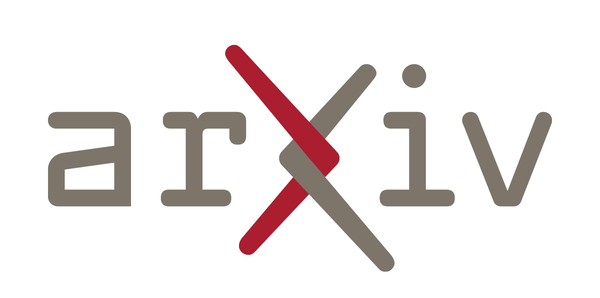Pao Ramen
-
A Measured Response to Bentham’s Bulldog
May 31 · maximumeffort.substack.com ⎯ On Fine-Tuning, Bayesian Theism, and a Humble Request for a Well-Defined Sigma Algebra.

-
Kafka: The End of the Beginning
May 31 · materializedview.io ⎯ A decade of focus on adoption has payed off. Now it's time to innovate.

-
Introduction
May 30 · naturalnode.github.io ⎯ Natural is a Javascript library for natural language processing

-
Unsupervised Keyphrase Extraction with PatternRank
May 30 · towardsdatascience.com ⎯ Using pretrained transformer language models and part of speech for state-of-the-art keyphrase extraction

-
Accelerating JavaScript arrays by 10x for Vector Search 🏹
May 30 · ashvardanian.com ⎯ You’ve probably heard about AI a lot this year. Lately, there’s been talk about something called Retrieval Augmented Generation (RAG). Unlike a regular chat with ChatGPT, RAG lets ChatGPT search through a database for helpful information. This makes the conversation better and the answers more on point. Usually, a Vector Search engine is used as the database. It’s good at finding similar data points in a big pile of data. These data points are often at least 256-dimensional, meaning they have many Number-s. If you use JavaScript, you might wonder whether to use the built-in Array type or the more specialized TypedArray for this job.

-
From Precision to Perception: User-Centred Evaluation of Keyword Extraction Algorithms for Internet-Scale Contextual Advertising
May 29 · arxiv.org ⎯ \tnotemark
-
Taskmaster AI - The PM for your AI agentTaskmaster AI - The PM for your AI agentTaskmaster AI
May 29 · www.task-master.dev ⎯ Taskmaster AI - The PM for your AI agent
-
Building a web game in 2025
May 29 ⎯ Devlog #2: On picking up a platform

-
GitHub - wzhudev/reverse-linear-sync-engine: A reverse engineering of Linear's sync engine. Endorsed by its co-founder & CTO.
May 28 · github.com ⎯ A reverse engineering of Linear’s sync engine. Endorsed by its co-founder & CTO. - wzhudev/reverse-linear-sync-engine
-
QA-prompting: Improving Summarization with Large Language Models using Question-Answering
May 28 · arxiv.org ⎯ Language Models (LMs) have revolutionized natural language processing, enabling high-quality text generation through prompting and in-context learning. However, models often struggle with long-context summarization due to positional biases, leading to suboptimal extraction of critical information. There are techniques to improve this with fine-tuning, pipelining, or using complex techniques, which have their own challenges. To solve these challenges, we propose QA-prompting – a simple prompting method for summarization that utilizes question-answering as an intermediate step prior to summary generation. Our method extracts key information and enriches the context of text to mitigate positional biases and improve summarization in a single LM call per task without requiring fine-tuning or pipelining. Experiments on multiple datasets belonging to different domains using ten state-of-the-art pre-trained models demonstrate that QA-prompting outperforms baseline and other state-of-the-art methods, achieving up to 29% improvement in ROUGE scores. This provides an effective and scalable solution for summarization and highlights the importance of domain-specific question selection for optimal performance 111GitHub repository link of the implementation: https://github.com/neelabhsinha/qa-prompting.
-
Salient Information Prompting to Steer Content in Prompt-based Abstractive Summarization
May 28 · arxiv.org ⎯ Large language models (LLMs) can generate fluent summaries across domains using prompting techniques, reducing the need to train models for summarization applications. However, crafting effective prompts that guide LLMs to generate summaries with the appropriate level of detail and writing style remains a challenge. In this paper, we explore the use of salient information extracted from the source document to enhance summarization prompts. We show that adding keyphrases in prompts can improve ROUGE F1 and recall, making the generated summaries more similar to the reference and more complete. The number of keyphrases can control the precision-recall trade-off. Furthermore, our analysis reveals that incorporating phrase-level salient information is superior to word- or sentence-level. However, the impact on hallucination is not universally positive across LLMs. To conduct this analysis, we introduce Keyphrase Signal Extractor (SigExt), a lightweight model that can be finetuned to extract salient keyphrases. By using SigExt, we achieve consistent ROUGE improvements across datasets and open-weight and proprietary LLMs without any LLM customization. Our findings provide insights into leveraging salient information in building prompt-based summarization systems. We release our code at \url{https://github.com/amazon-science/SigExt}

-
Pope Francis’ Tomb: A Type Tragedy
May 28 · pimpmytype.com ⎯ What the Pope’s tomb teaches us about kerning, Roman type, and why spacing still matters in UI design.

-
In praise of… Poki.com.
May 27 · pieterkooyman.substack.com ⎯ “The web” is so back! And there is a quiet and gentle Goliath smashing it in the background - Poki.com. Mobile devs should take note.
-
Should you split that file?
May 27 · www.pathsensitive.com ⎯ You’re a line programmer for EvilCorp, and it’s just an average day working on some code to collapse the economy. Then you realize you n…
-
Deep Reinforcement Learning, a textbook
May 27 · arxiv.org ⎯ Deep reinforcement learning has gathered much attention recently. Impressive results were achieved in activities as diverse as autonomous driving, game playing, molecular recombination, and robotics. In all these fields, computer programs have taught themselves to solve difficult problems. They have learned to fly model helicopters and perform aerobatic manoeuvers such as loops and rolls. In some applications they have even become better than the best humans, such as in Atari, Go, poker and StarCraft. The way in which deep reinforcement learning explores complex environments reminds us of how children learn, by playfully trying out things, getting feedback, and trying again. The computer seems to truly possess aspects of human learning; this goes to the heart of the dream of artificial intelligence. The successes in research have not gone unnoticed by educators, and universities have started to offer courses on the subject. The aim of this book is to provide a comprehensive overview of the field of deep reinforcement learning. The book is written for graduate students of artificial intelligence, and for researchers and practitioners who wish to better understand deep reinforcement learning methods and their challenges. We assume an undergraduate-level of understanding of computer science and artificial intelligence; the programming language of this book is Python. We describe the foundations, the algorithms and the applications of deep reinforcement learning. We cover the established model-free and model-based methods that form the basis of the field. Developments go quickly, and we also cover advanced topics: deep multi-agent reinforcement learning, deep hierarchical reinforcement learning, and deep meta learning.

-
Rock paper scissors algorithms 2011
May 27 · daniel.lawrence.lu ⎯ Rock paper scissors is a game about predicting the opponent. This is a hard problem. Someone new to this may ask, “Why not just play randomly?” It is well known that it is impossible to consistently beat a random player. Then why bother? As it turns out, a random strategy will only win 50% of its matches. However, a good predicting algorithm can exploit patterns in not-so-random opponents (including humans) and beat them more often. In fact, some of the strongest engines on the leaderboard have a win rate of over 80%!
-
Broken Poker
May 27 · push.cx ⎯ Published: ← 2025-03-28 → Category: ← Games Tags: ← humor ← poker

-
Building a web game in 2025
May 27 ⎯ Devlog #2: On picking up a platform

-
I made a font
May 27 · blog.chay.dev ⎯ A quick look into the process of creating a font.
-
CSS Minecraft
May 27 · simonwillison.net ⎯ Incredible project by Benjamin Aster: > There is no JavaScript on this page. All the logic is made 100% with pure HTML & CSS. For the best performance, please close …
